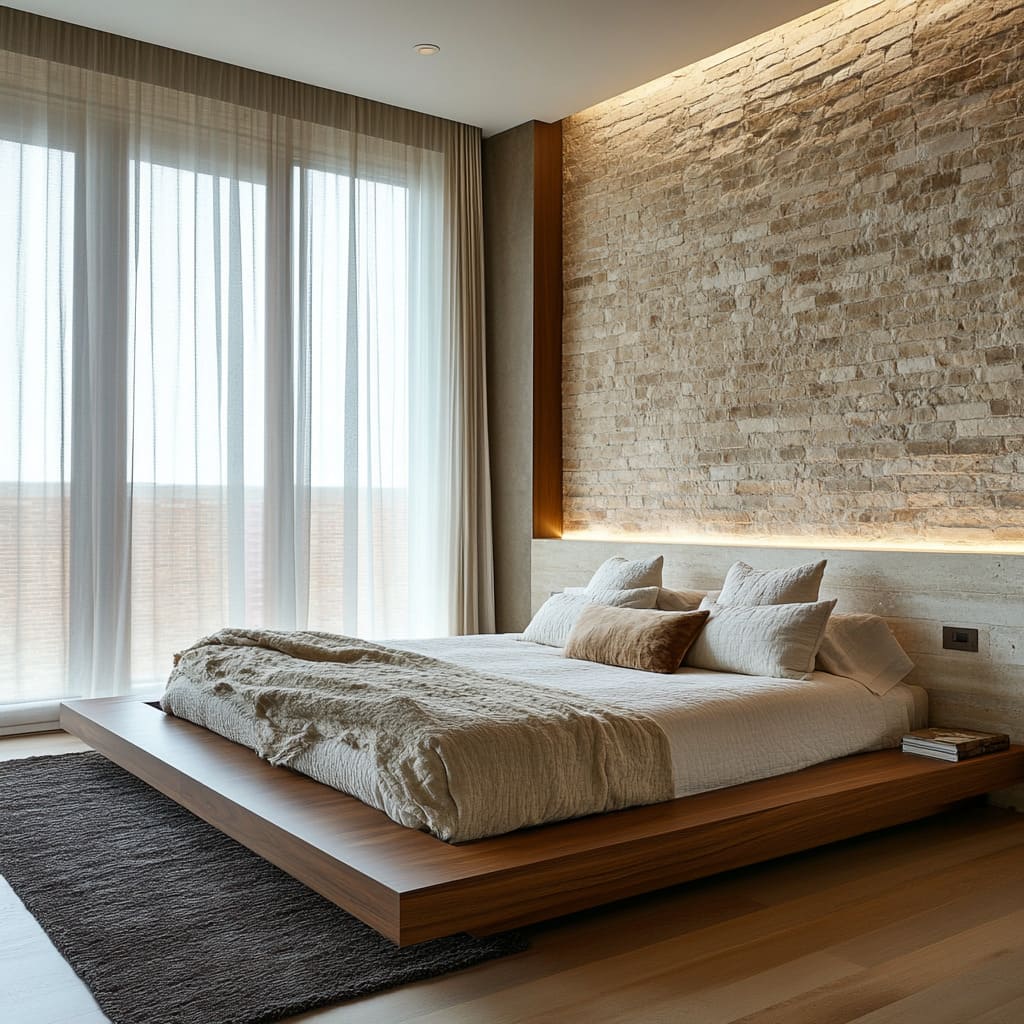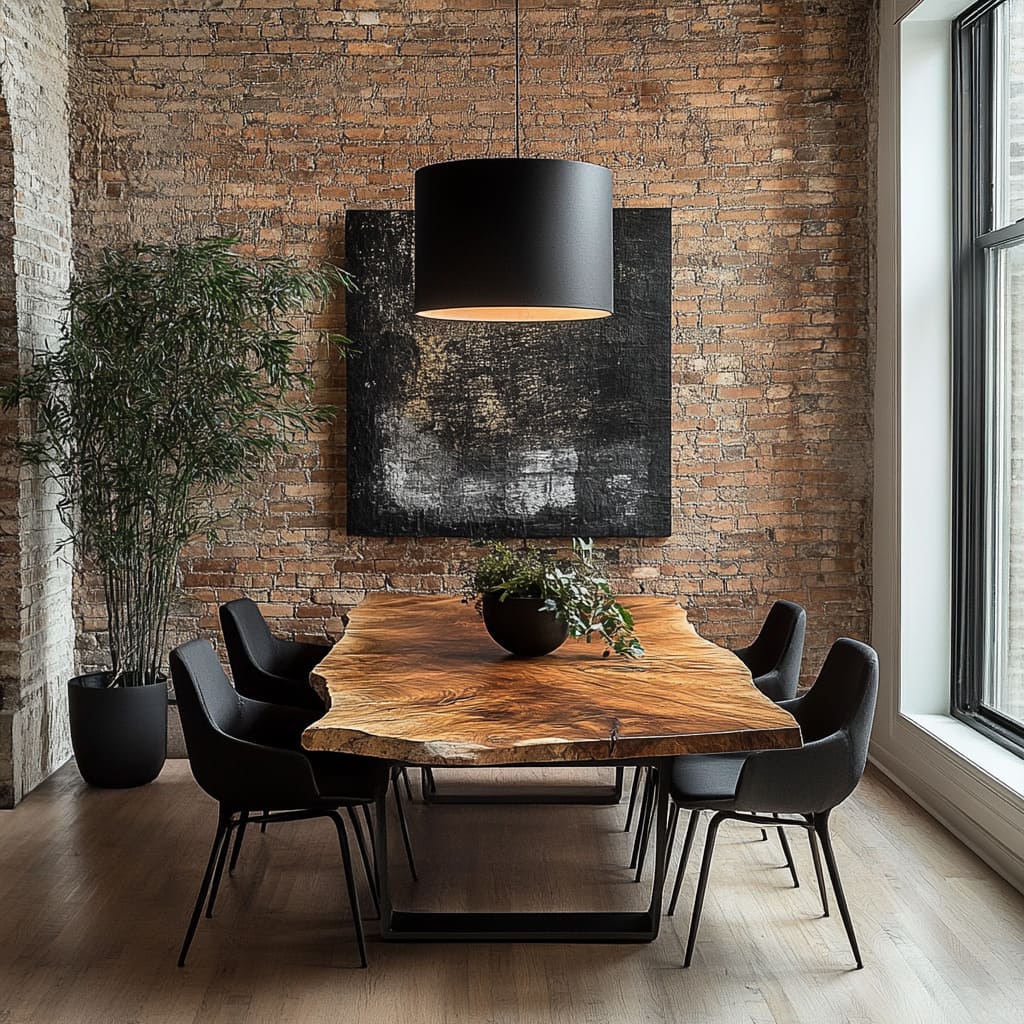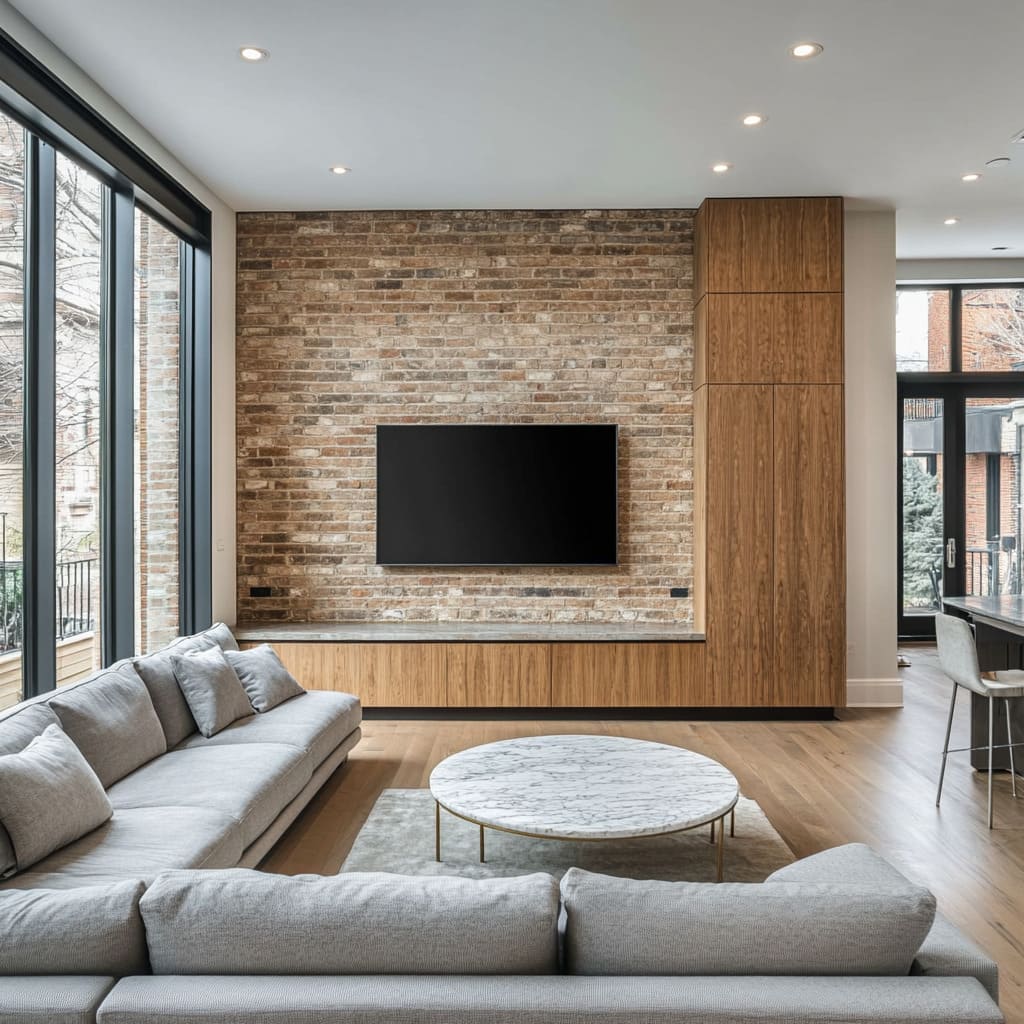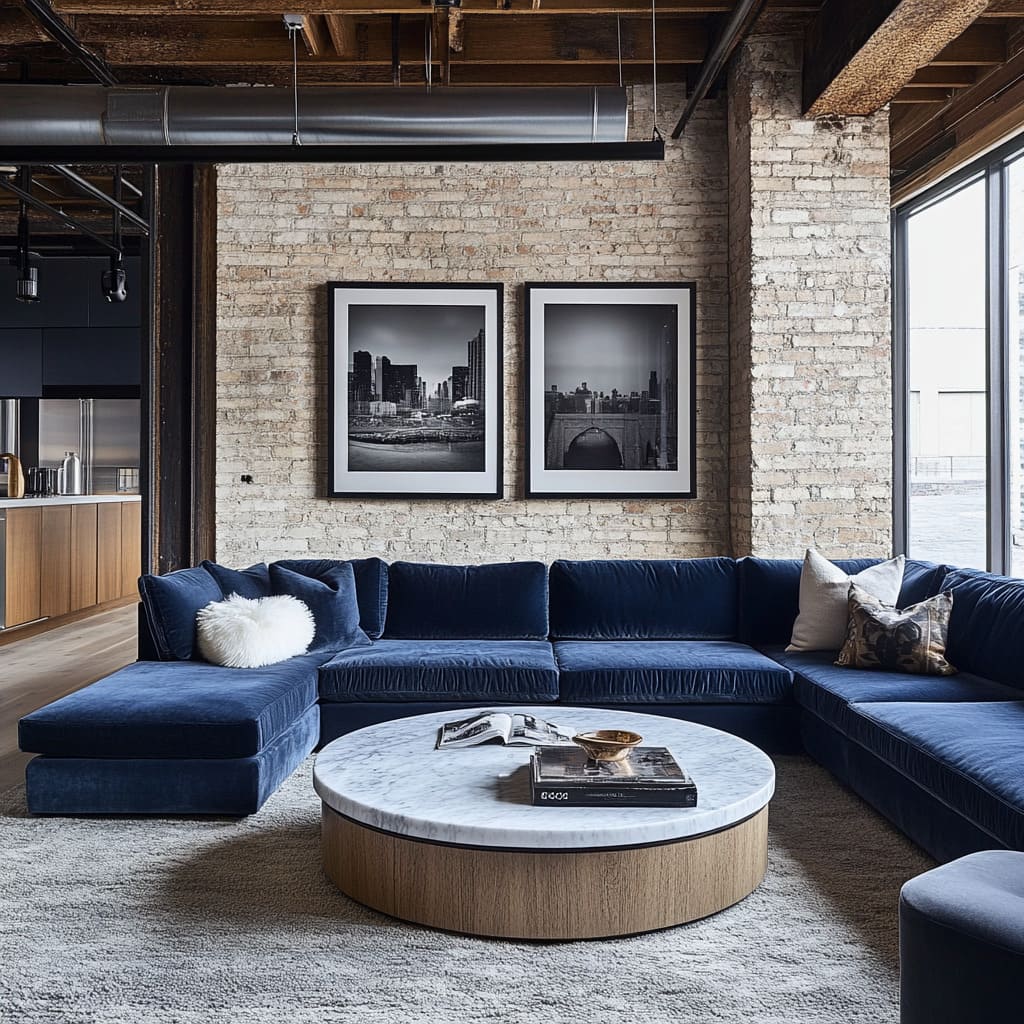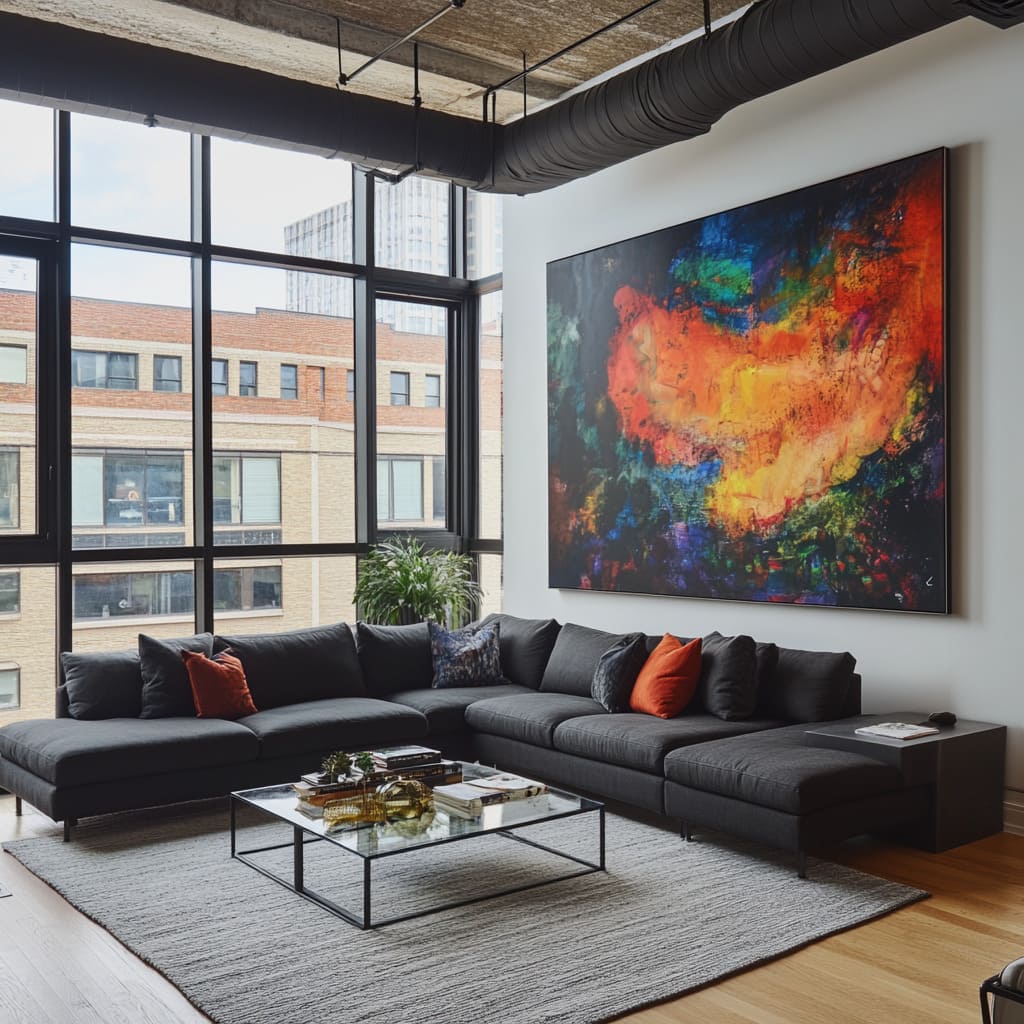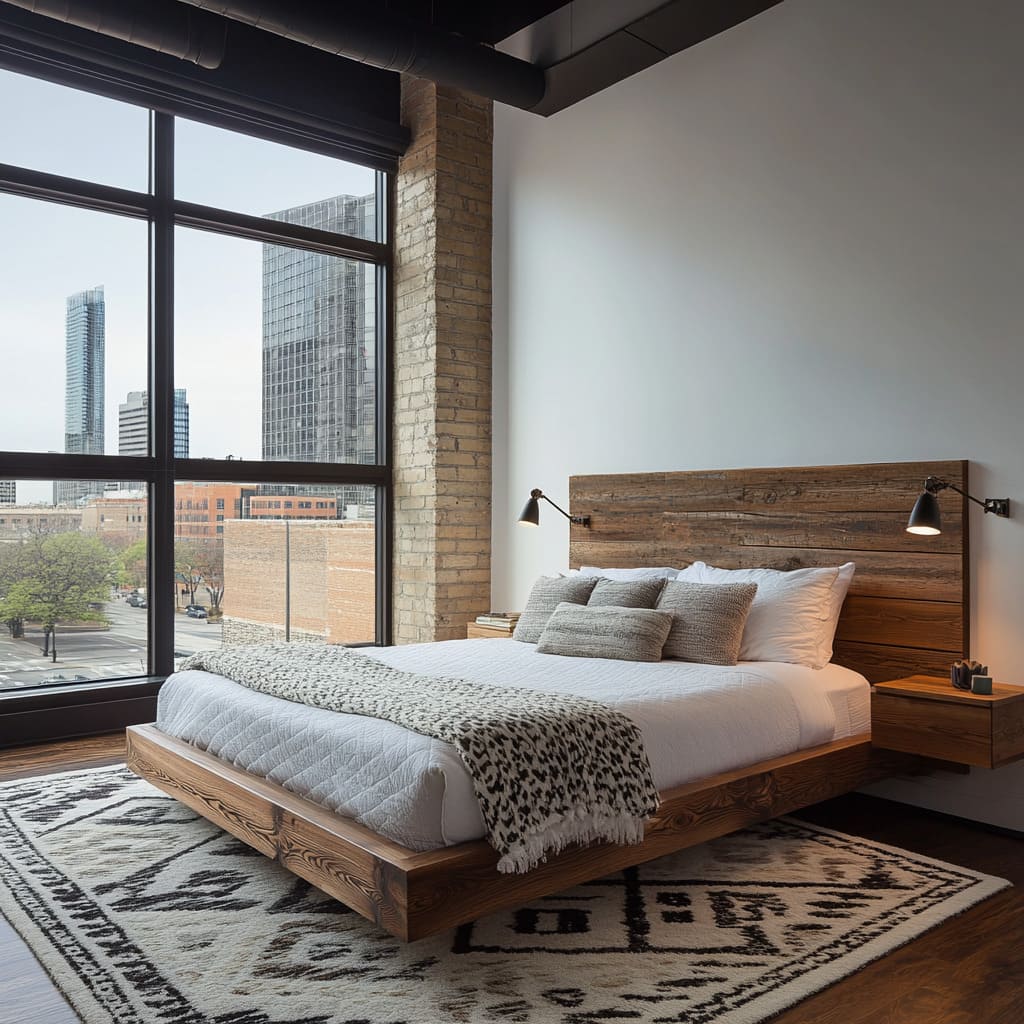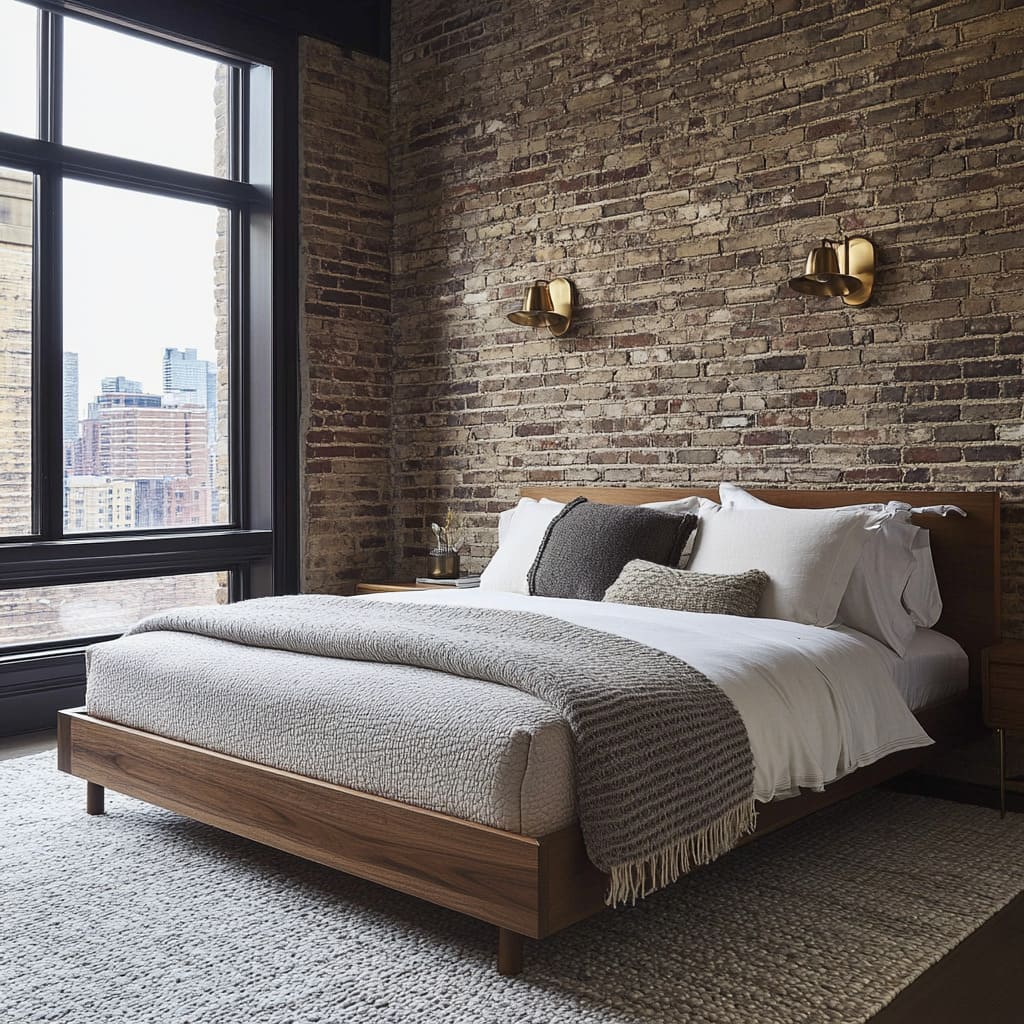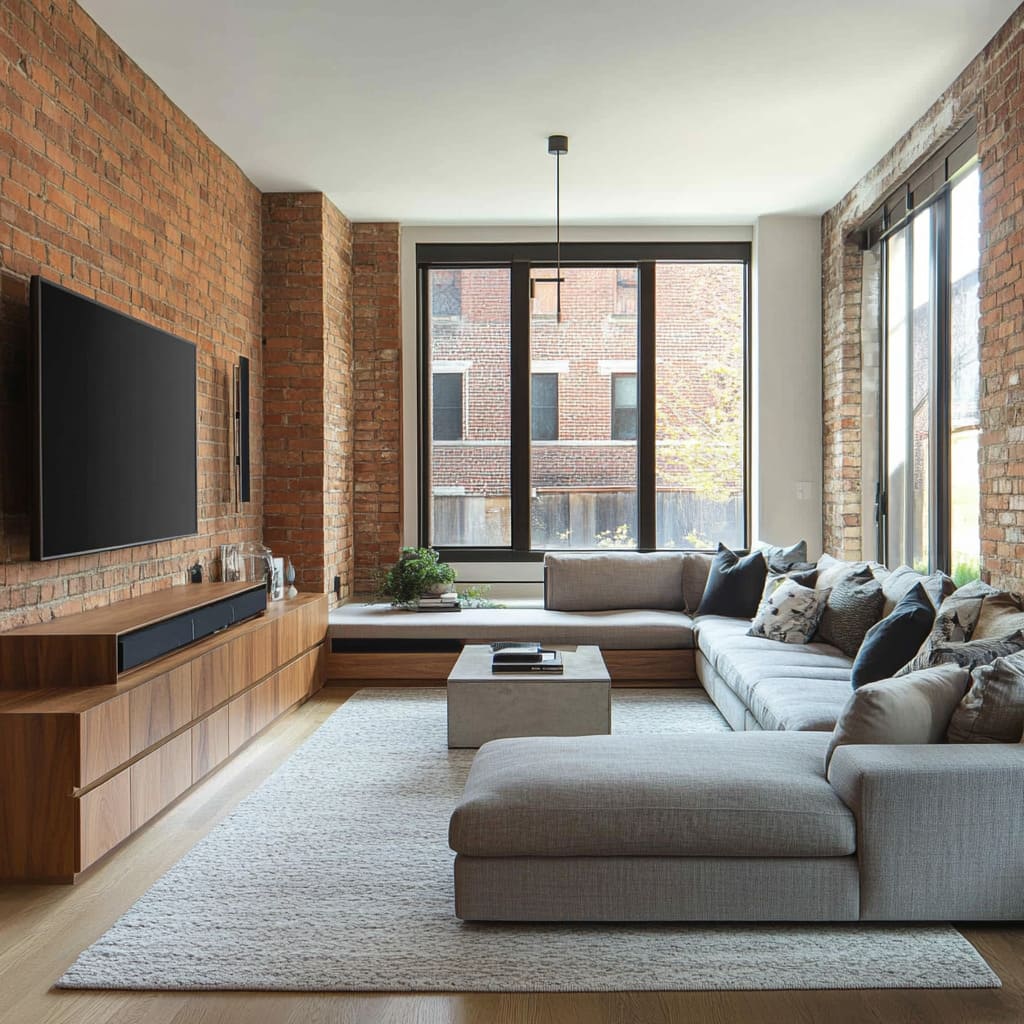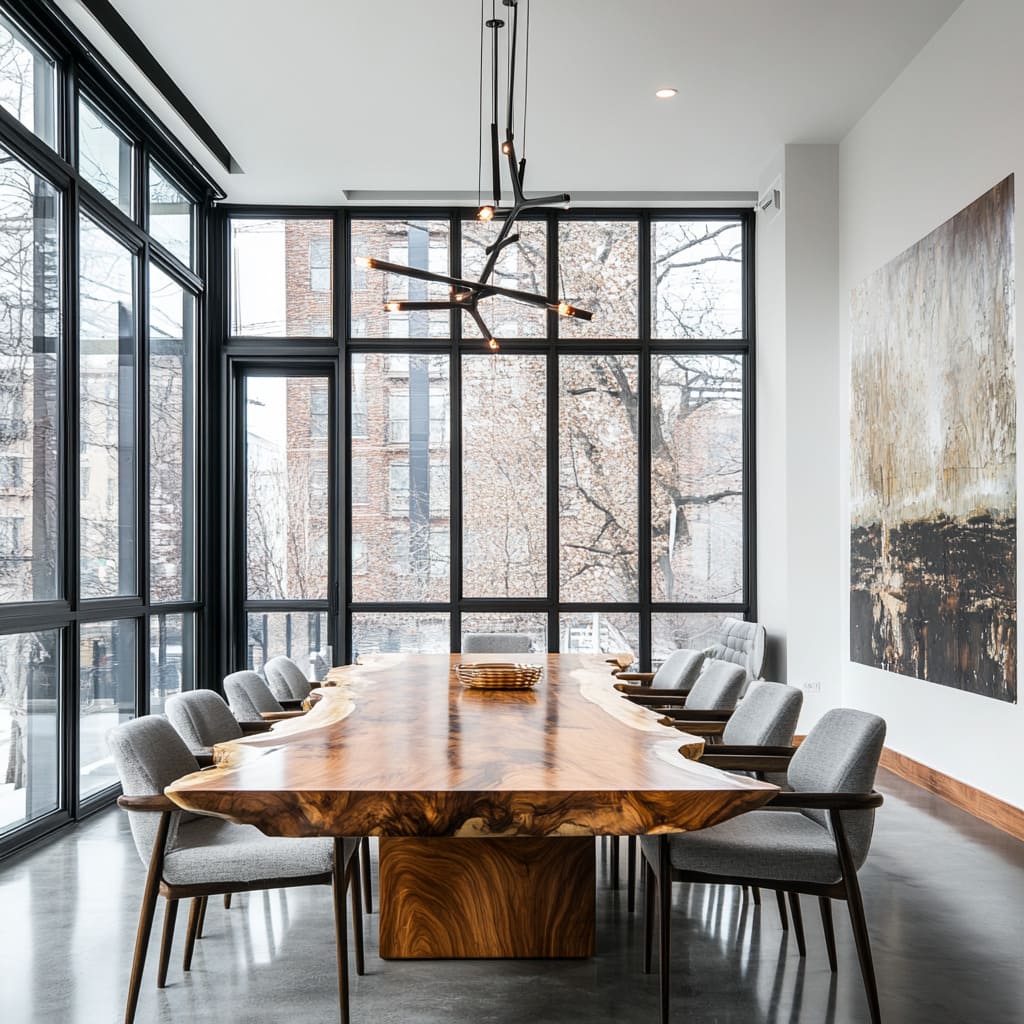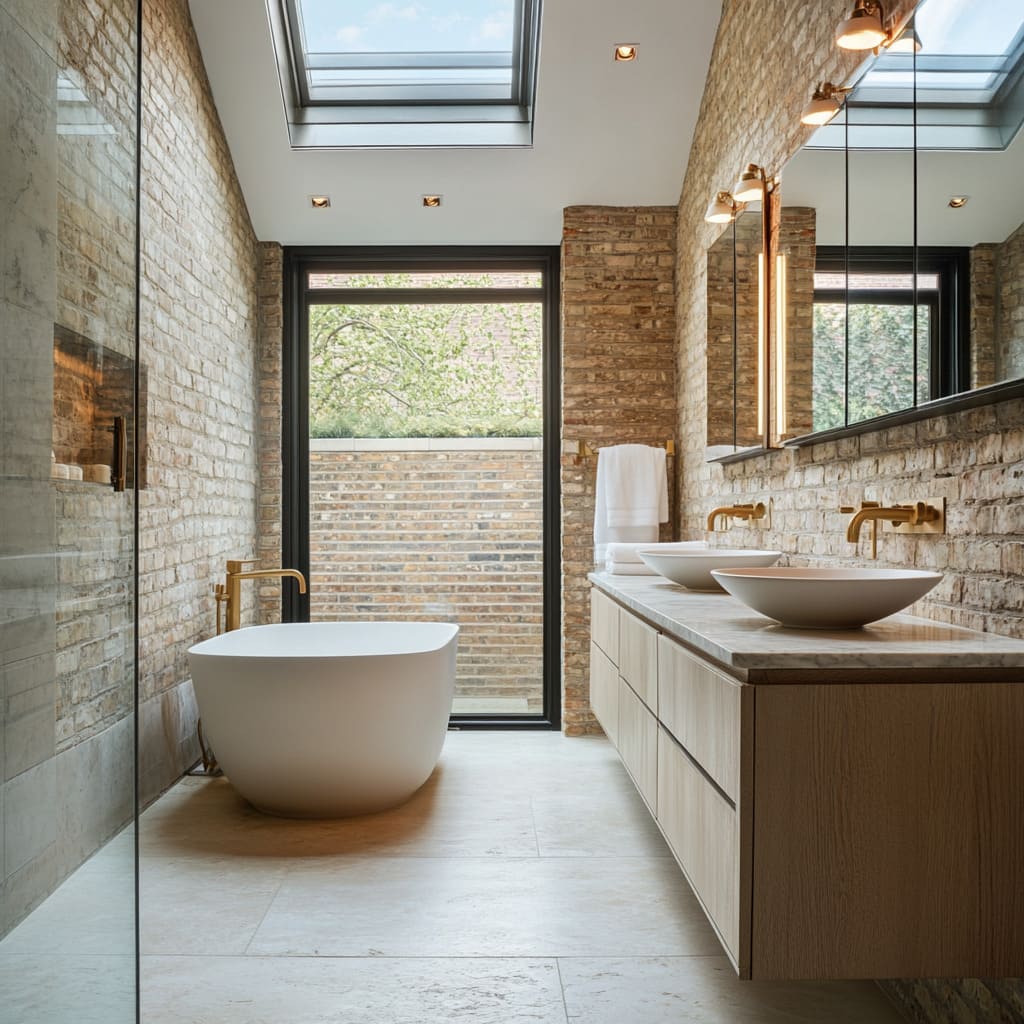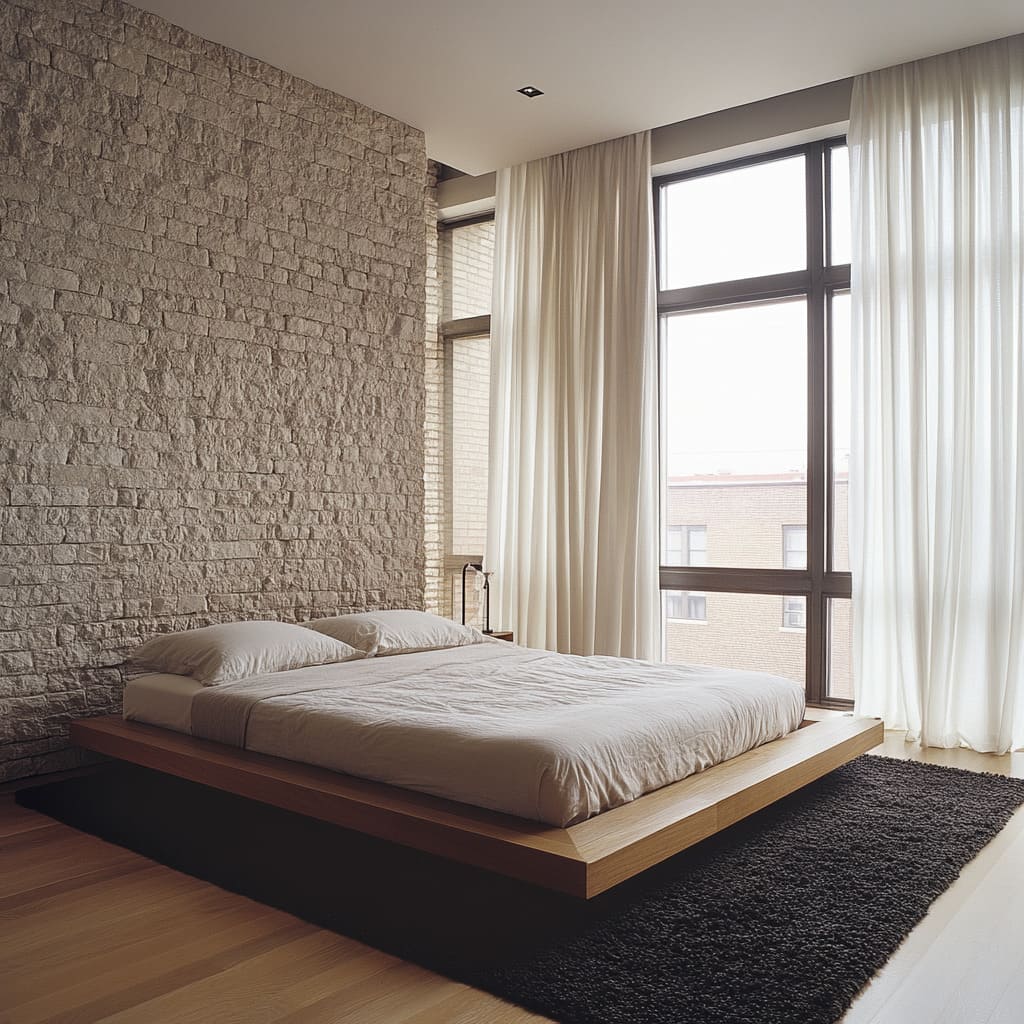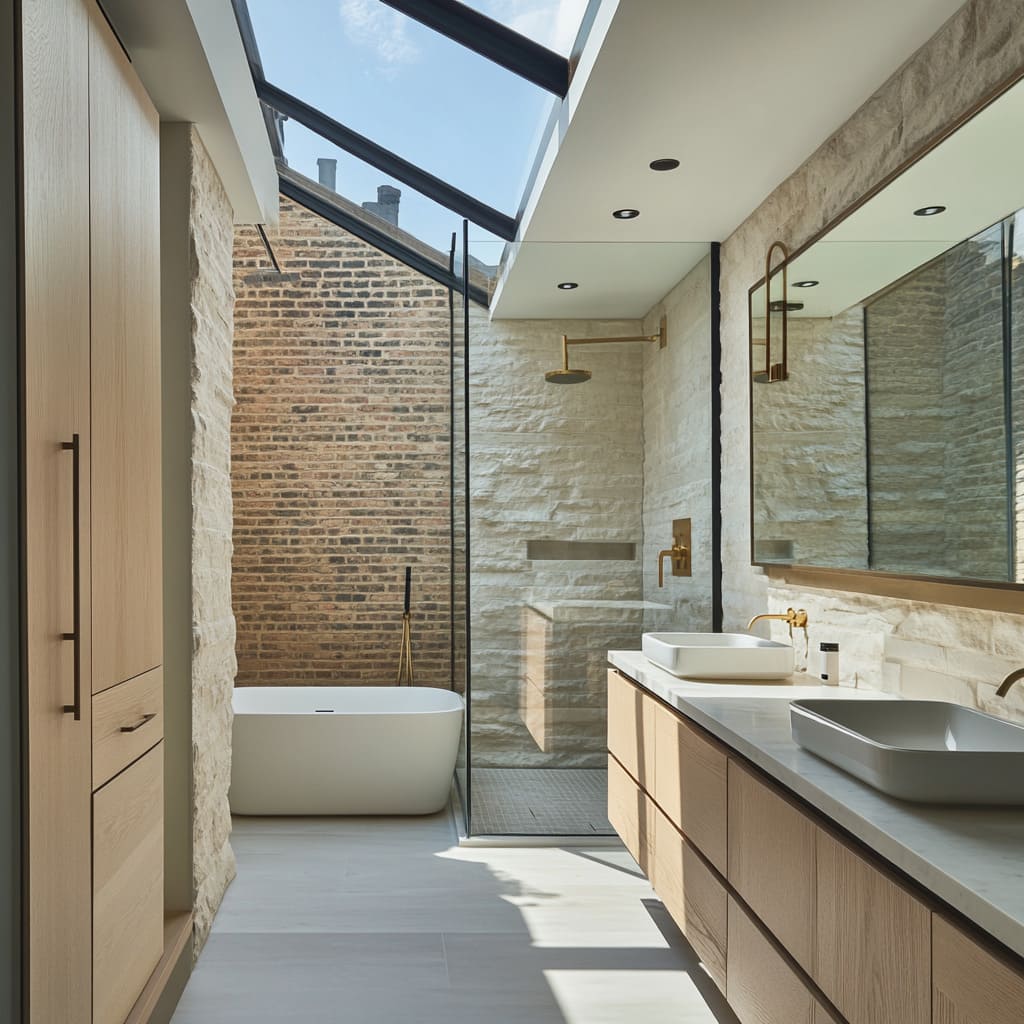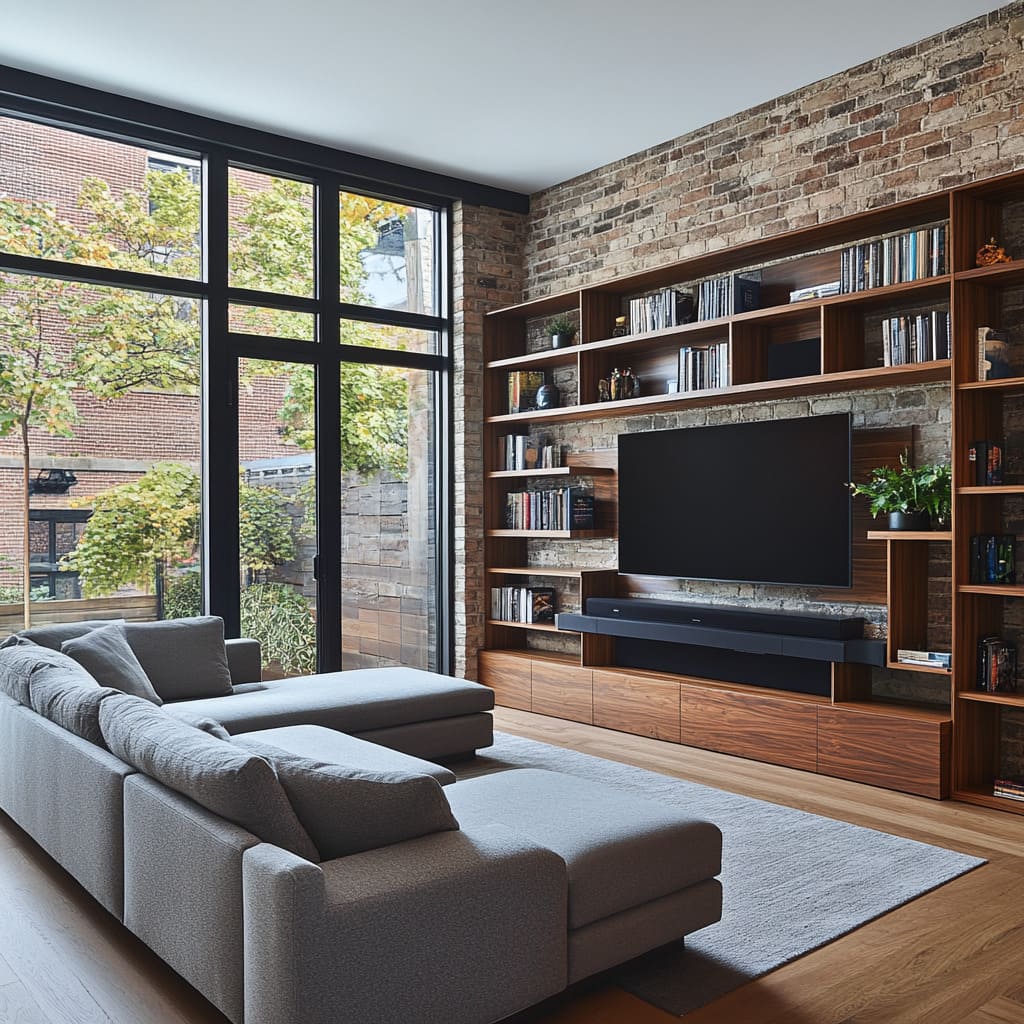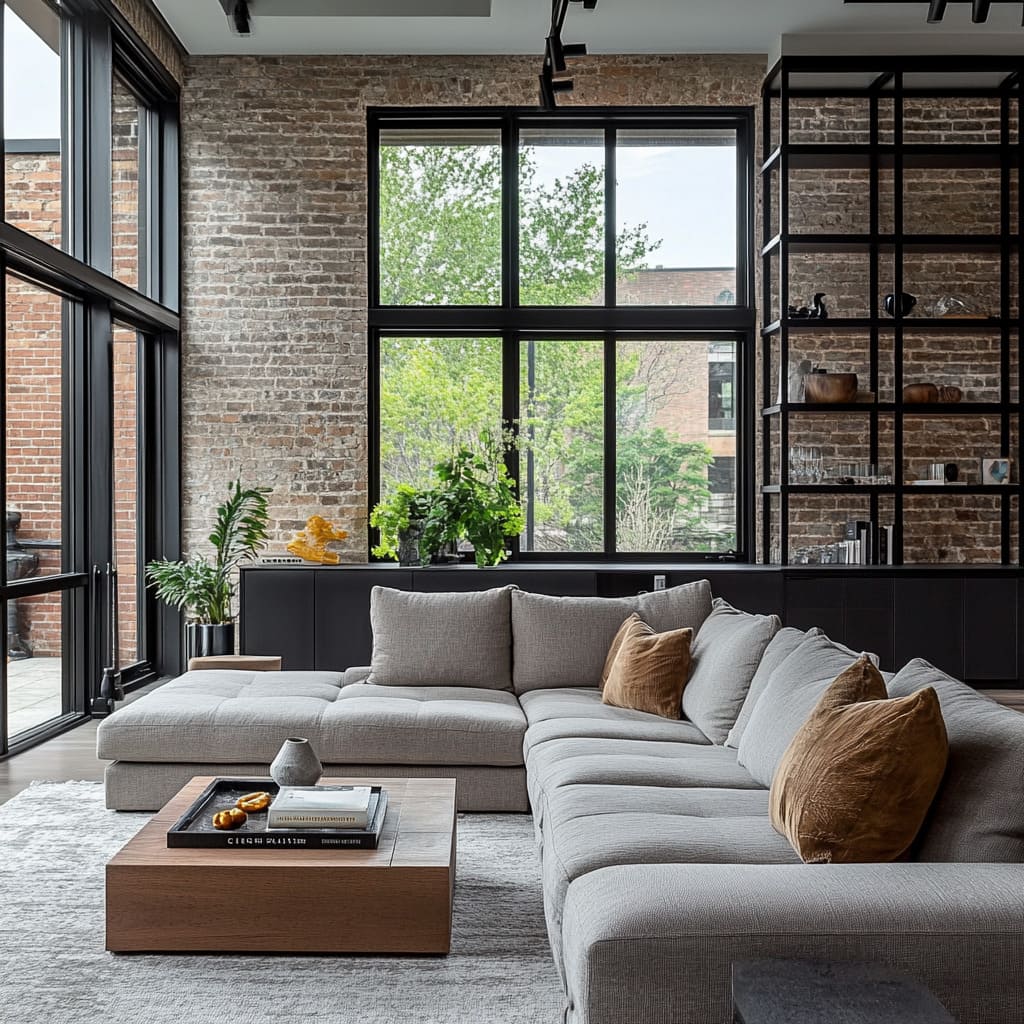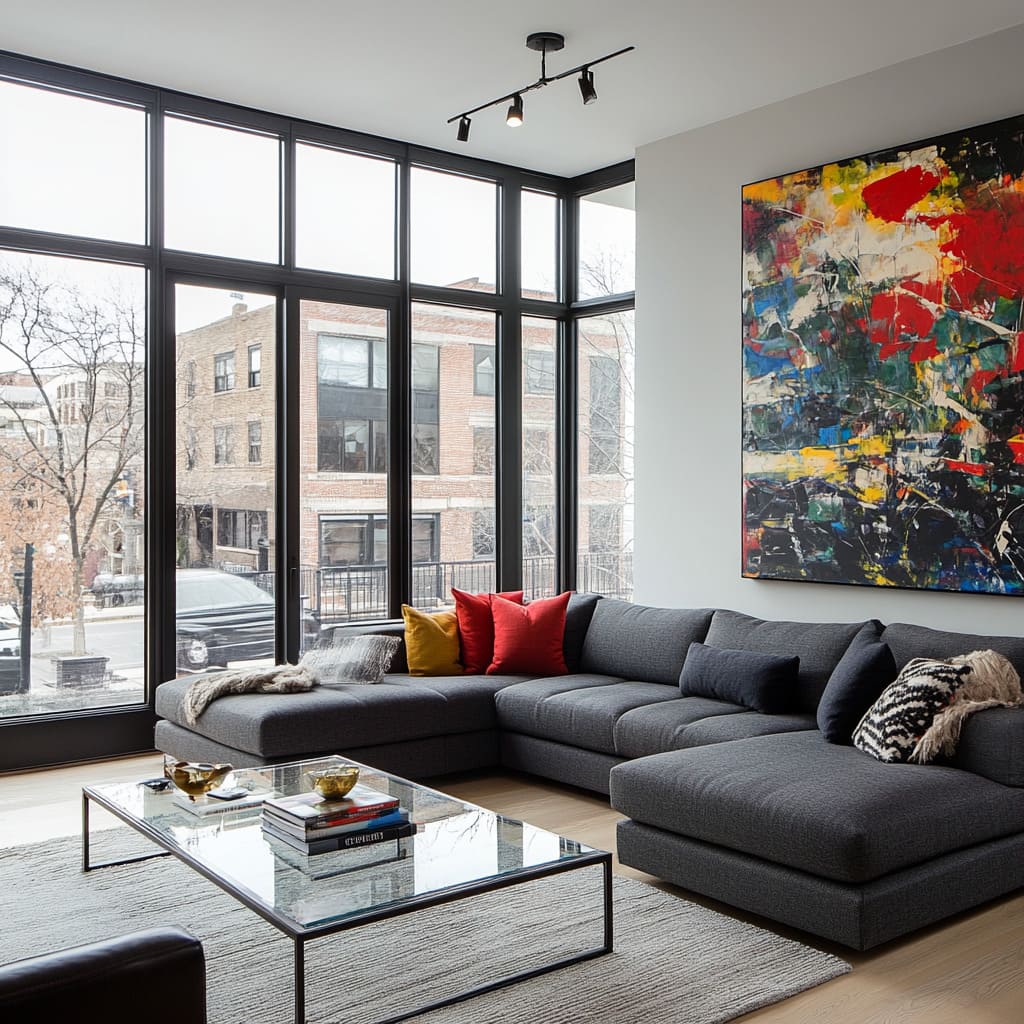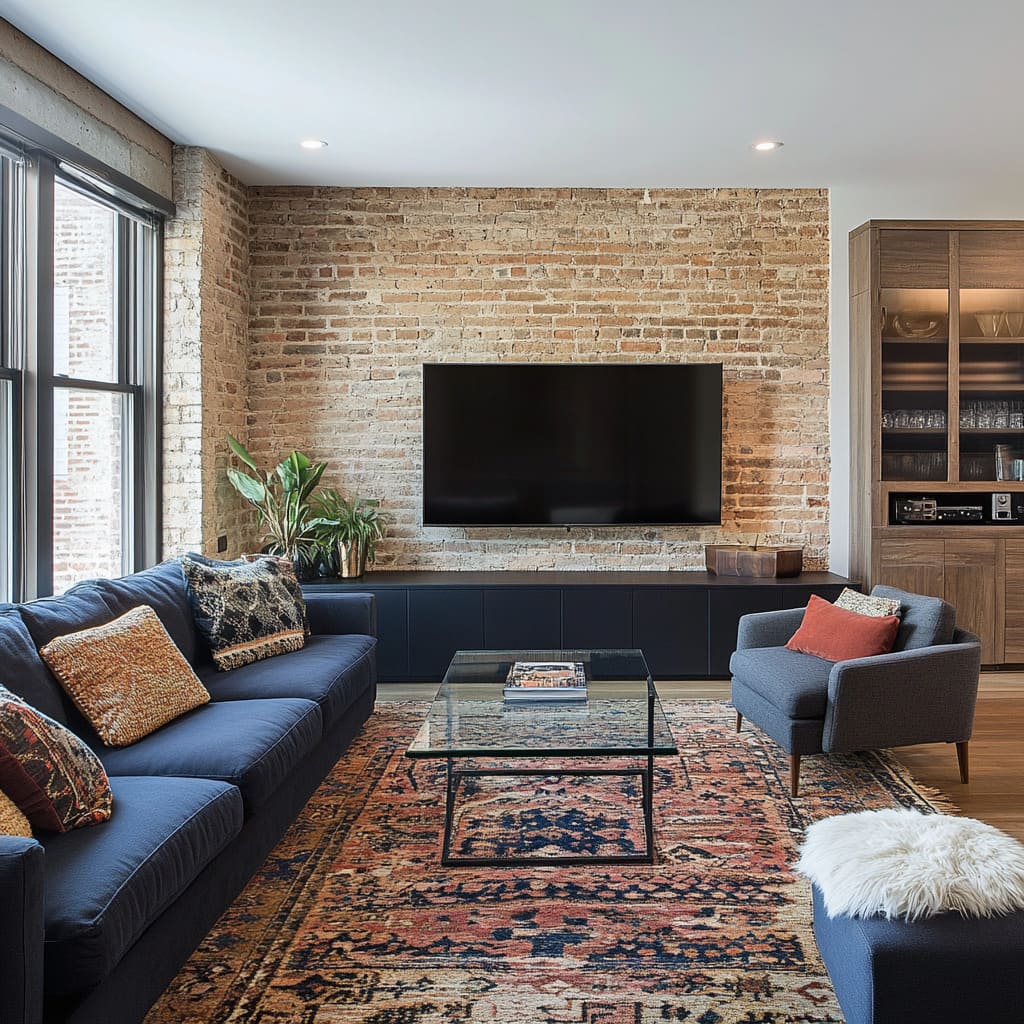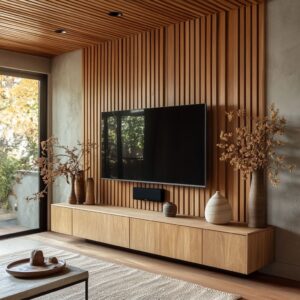In recent years, the rise of modern industrial interior design has captured the imagination of urban dwellers and design enthusiasts alike. This style offers the perfect combination of raw, rugged materials with sleek, minimalistic elements, creating a balance between function and aesthetic appeal.
It draws inspiration from industrial spaces like old factories and warehouses but refines these ideas to fit the comfort and demands of modern living. What sets it apart is how it strips interiors down to their most essential elements—raw textures, open spaces, and simple furniture—while maintaining a sense of comfort and style.
At its core, modern industrial home design is about embracing open layouts that emphasize spaciousness. It takes advantage of natural materials like brick, wood, and metal, combining them with clean lines to create an environment that feels both functional and sophisticated.
This style rejects clutter in favor of simplicity, using statement pieces and raw finishes to add character without overwhelming the space. The result is an environment that is as visually striking as it is practical, making it perfect for both lofts and urban homes
While the roots of this design style may lie in industrial buildings, its appeal has grown far beyond the city limits. Homeowners in suburban and rural settings are now incorporating industrial modern house design elements into their spaces, attracted by its timeless look and functional layout.
The expansion of this style into more mainstream settings reflects its versatility, as it can be tailored to suit various home sizes and purposes without losing its distinctive character. Whether you’re in a metropolitan loft or a modern home outside the city, this design style offers a unique blend of raw aesthetics and contemporary comforts
The Key Elements of Modern Minimalist Industrial Design
Exposed Architectural Elements
One of the most iconic features of this design style is the use of exposed architectural elements. Brick walls, for instance, offer both texture and warmth, making them an essential part of many industrial interiors.
These walls bring character to a space, serving as a backdrop for minimalist furniture and art. The roughness of the brick stands in contrast to the smooth, clean lines of modern décor, creating a balanced yet striking visual.
Rather than covering up these raw materials, the design celebrates them, showcasing the natural beauty of the building’s construction. Exposed ductwork and beams further reinforce the industrial aesthetic.
Instead of hiding structural elements behind drywall or ceiling panels, this style leaves them visible, adding an authentic, industrial edge to the space. The use of metal beams, pipes, and ducts is not only functional but also serves as a design feature that keeps the room grounded in its industrial roots.
These details add depth and personality to the space, making even the most minimalist room feel unique and thoughtfully designed
Use of Natural Light
Natural light plays a crucial role in modern industrial living room interior design. Large, expansive windows with black metal frames allow sunlight to flood the room, emphasizing the raw materials like brick, stone, and metal.
The contrast between the dark window frames and the bright light pouring in enhances the minimalist approach, highlighting the clean lines and uncluttered feel of the space. The use of large windows also connects the interior to the exterior, offering glimpses of the urban landscape while keeping the focus on the open, airy feel of the room.
The black metal frames surrounding these windows are a hallmark of industrial design, and their sleek, modern appearance adds a touch of sophistication to the room. This contrast between light and dark creates a dramatic yet balanced look, contributing to the overall minimalist aesthetic
Raw Materials and Textures
The heart of industrial minimalism lies in the use of raw materials and textures. Wood, stone, and metal are the foundation of this style, with each material offering its own unique qualities.
Warm wood tones provide a sense of natural beauty, whether it’s through hardwood floors, wooden countertops, or statement furniture pieces like a live-edge dining table. Wood helps soften the starkness of the metal and stone, bringing warmth to the space.
Metal elements, on the other hand, add a cool, industrial feel. From black metal accents on furniture to exposed steel beams, metal is a key component that reinforces the room’s urban edge.
Paired with the natural warmth of wood, metal adds sophistication without overpowering the space. Finally, stone surfaces, whether they’re marble countertops or concrete flooring, introduce a tactile quality that complements the other materials.
The cool, hard surface of stone adds a sense of luxury while maintaining the minimalist approach. The contrast between these materials creates a sense of harmony in the space, where every element serves a purpose without feeling excessive or ornamental
The Role of Clean Lines in Furniture and Design
One of the defining traits of industrial modern interior design is the commitment to clean lines and purposeful simplicity. In a world where cluttered, over-decorated spaces can feel overwhelming, this design ethos embraces a less is more approach, allowing every piece of furniture to serve both functional and aesthetic purposes.
The use of clean lines in furniture helps create an atmosphere that feels open, organized, and balanced. It also enhances the raw, industrial elements of the space, allowing them to shine without being overshadowed by overly decorative items.
Whether it’s through minimalist furniture, clever storage solutions, or the thoughtful arrangement of pieces, clean lines are essential to creating a harmonious industrial modern space
Minimalist Furniture
Industrial modern rustic interior design often draws inspiration from the clean, simple lines of mid-century modern furniture. Pieces like streamlined wooden desks, simple leather chairs, and unadorned shelving fit seamlessly into the industrial aesthetic.
The appeal lies in their understated elegance—there’s no need for excessive ornamentation or embellishment. Instead, these pieces focus on functionality, durability, and timeless design.
The wooden desks, often with rich tones and smooth surfaces, add warmth to the room, balancing the cooler textures of exposed brick or metal. Meanwhile, leather chairs with their organic texture bring a luxurious yet grounded feel to the space.
The influence of mid-century design also brings in a subtle retro flair, keeping the room from feeling too stark or cold
Another element that enhances the sense of openness and simplicity is floating furniture. In bathrooms and bedrooms, floating vanities or nightstands create an illusion of more space by keeping the floor clear and allowing light to flow beneath the furniture.
Floating vanities, for example, often feature clean, rectangular forms with hidden storage, offering a practical solution while maintaining a minimalist aesthetic. The absence of bulky legs or frames emphasizes the clean lines and helps the furniture blend effortlessly into the overall design.
This type of furniture not only contributes to a light, airy atmosphere but also complements the industrial character of the space with its understated elegance
Sleek Built-in Storage
Custom-built cabinets and shelving play a pivotal role in maintaining the sleek, clutter-free look of an industrial modern home decor. Rather than relying on freestanding cabinets or traditional bulky furniture, built-ins provide an integrated, streamlined appearance.
In kitchens, for instance, sleek wooden cabinetry that extends seamlessly from floor to ceiling creates a sense of order and uniformity. These cabinets often feature hidden handles or touch-latch mechanisms to preserve the clean, minimalist aesthetic.
The same concept applies to home offices or living spaces, where built-in shelves can display books or personal items in a way that feels curated rather than chaotic. A great example is the use of sleek black bookshelves in modern industrial office interior design.
These shelves often stretch from floor to ceiling and are designed to hold everything from books to decorative items in an organized, visually appealing manner. The black metal or wood finish complements the exposed brick or concrete walls, adding to the industrial vibe while keeping the space uncluttered.
These built-in solutions contribute not just to functionality but also to the overall design by reinforcing the clean lines that define the minimalist approach
Balancing Raw Textures with Modern Sophistication
The art of industrial modern interior design lies in achieving a balance between the raw, unfinished elements of the space and the modern, polished pieces that bring a sense of refinement. The contrast between these opposing textures is what makes this style so visually engaging, and it’s what prevents industrial spaces from feeling too harsh or unfinished.
By carefully layering soft furnishings and sophisticated materials into the mix, this style creates an environment that is both livable and stylish
The Importance of Contrast
One of the key strategies for creating a welcoming industrial space is to balance soft elements with the rougher, raw textures of materials like brick, concrete, and metal. In a living room, for example, a plush velvet sofa can be placed against a backdrop of exposed brick to create a contrast that feels both luxurious and grounded.
The softness of the velvet upholstery helps to offset the rugged, hard surfaces, making the room feel cozy and inviting. Similarly, warm leather chairs in a home office can bring a sense of comfort and elegance while still adhering to the minimalist principles of the design
Natural Materials
The use of wood and marble is another way to bring warmth and sophistication into an industrial space. Live-edge wood dining tables, for example, add an organic, natural element that contrasts beautifully with metal chairs or exposed steel beams.
The raw edges of the wood preserve its natural beauty, while the polished surface ensures it fits within the modern aesthetic. Similarly, marble countertops in kitchens or bathrooms offer a sleek, polished surface that balances the rawness of concrete floors or brick walls.
The natural veining of marble adds subtle visual interest without feeling excessive, making it a perfect material for those seeking a minimalist yet refined look
Subtle Luxuries
Though industrial modern spaces are often characterized by their minimalist approach, subtle touches of luxury can elevate the design and prevent it from feeling too stark. Brass accents are a great example of this.
Whether it’s through brass fixtures in the kitchen, such as faucets or cabinet handles, or sleek pendant lighting with brass finishes, these small details bring warmth and sophistication to the space. Brass has a timeless quality that adds richness without overpowering the industrial aesthetic.
These subtle luxuries, when used sparingly, add just the right amount of contrast to keep the design feeling elevated and complete. By integrating clean lines, natural materials, and sophisticated accents, industrial modern interiors strike a perfect balance between raw and refined.
The simplicity of minimalist furniture combined with the texture of exposed architectural elements creates a visually compelling and highly functional space, whether in a modern industrial living room interior design or a sleek home office
Functional Minimalism in Open-Concept Spaces
Kitchen Design
In modern industrial kitchens, functionality is paired with a raw, yet refined aesthetic that celebrates openness and simplicity. Exposed brick walls often serve as the backdrop, giving the kitchen a sense of texture and history, while sleek, minimalist cabinetry brings the space into the present.
This combination of rugged and polished elements is the foundation of industrial minimalism, where every component is carefully chosen for its functionality and visual appeal. The centerpiece of many modern industrial kitchens is the kitchen island.
Typically crafted from raw materials like wood or marble, the island acts as both a functional workspace and a design focal point. The natural grain of wood or the veining in marble adds warmth and depth to the space, contrasting with the cooler tones of metal finishes or concrete floors.
These islands are often accompanied by minimalist barstools—think simple black metal frames with leather or wooden seats, keeping the look understated yet practical. The barstools not only serve as seating but also seamlessly integrate into the overall design without overwhelming the open layout
Lighting plays a critical role in maintaining the clean, uncluttered feel of an industrial minimalist kitchen. Pendant lighting, with its simple, sleek shapes, often hangs above the island or dining area, adding warmth and an intimate glow to the space.
Black metal fixtures or matte finishes complement the industrial aesthetic, while the design remains unobtrusive. By keeping the lighting subtle and functional, the kitchen stays open, bright, and uncluttered—allowing the natural textures of brick, wood, and stone to take center stage
Home Office
When it comes to creating a modern industrial home interior design for a home office, functionality doesn’t have to come at the expense of style. Minimalist industrial home offices focus on combining practical elements like storage and work surfaces with sleek, modern furniture and thoughtful design choices.
A sleek wooden desk becomes the centerpiece of the space, offering not only a work surface but also adding a touch of warmth and texture. Leather office chairs with clean lines and minimal embellishments provide comfort without disrupting the minimalist aesthetic.
To keep the workspace visually clean and organized, open shelving is often used to store books, personal items, and office supplies. These shelves, typically made from black metal or dark wood, echo the industrial aesthetic while also serving as functional storage.
Rather than traditional bulky storage units, built-in cabinets or floating shelves maintain the room’s sense of airiness, ensuring that clutter doesn’t detract from the open feel. Large windows framed with black metal allow natural light to flood the office, enhancing the space’s minimalist atmosphere.
These windows also connect the workspace to the surrounding environment, bringing in light and offering views of the outside, helping to create a calm yet productive environment. The simplicity of the design combined with functional elements allows for a workspace that feels intentional, sleek, and modern—ideal for focused work
Infusing Personality into Minimalist Industrial Interiors
While minimalist industrial spaces prioritize clean lines and functionality, they don’t have to feel cold or impersonal. Through the careful selection of artwork, decor, and greenery, personality can be woven into these interiors without compromising the simplicity of the design.
Artwork and Decorative Objects
One of the easiest ways to bring character to a modern contemporary industrial style interior is through bold, black-and-white abstract artwork or urban-inspired pieces. Large-scale art featuring cityscapes or abstract forms adds a dramatic focal point without overwhelming the room.
The neutral palette of the art complements the raw materials used in industrial interiors, such as concrete or brick, and adds visual interest to otherwise pared-back spaces. When placed strategically, artwork can infuse energy and depth into the room while maintaining the minimalist ethos.
Shelving also plays an essential role in adding a personal touch to industrial spaces. By curating books, collectibles, and sculptures on open shelves, homeowners can display items that reflect their personality and interests while keeping the room visually cohesive.
Personal collections should be kept minimal to avoid clutter, but when chosen carefully, they can add warmth and intrigue to a space. A well-placed sculpture or a stack of curated books can be just enough to breathe life into the room while preserving its clean lines
Greenery
Incorporating plants is a simple but effective way to soften the industrial edges of a room and introduce a natural element. A few strategically placed potted plants—whether it’s a small plant on a side table or a larger tree in a corner—can bring warmth and life to the room.
Greenery acts as a refreshing contrast to raw materials like brick or concrete, offering a pop of color without disrupting the minimalist vibe. Plants also help break up the hardness of the industrial materials, creating a more balanced and welcoming environment.
For larger spaces, a tall plant or tree can be placed near windows, taking advantage of natural light while adding visual interest. The greenery not only enlivens the space but also offers a sense of calm, making the room feel more connected to nature despite the industrial undertones.
Whether it’s a collection of smaller potted plants or one statement tree, greenery helps create a more lived-in, personal atmosphere
Creating Comfort in Industrial Minimalist Spaces
Though minimalist industrial spaces are known for their clean lines and raw materials, introducing comfort is essential to making the space livable. Through thoughtful use of soft furnishings and smart furniture arrangements, these interiors can feel as inviting as they are stylish.
Soft Furnishings
One way to instantly warm up an industrial space is by introducing plush rugs and textured throws. A neutral-toned rug with a subtle pattern adds softness underfoot, balancing out the hard surfaces like concrete floors or wooden beams.
Textured throws, draped over a chair or sofa, offer visual warmth and provide a cozy layer that contrasts with the minimalist setting. These small touches allow for comfort without detracting from the clean, streamlined look of the room
Pillows and Cushions
Well-placed pillows and cushions can also elevate the comfort level of an industrial space. Opting for natural fabrics such as linen or wool in neutral tones ensures that the minimalist aesthetic is maintained, while adding softness to seating areas.
These cushions not only provide comfort but also add texture, subtly enhancing the visual depth of the space. By keeping the palette neutral and the designs simple, these additions blend seamlessly with the industrial backdrop.
Furniture Arrangement
In modern industrial home interior design, the arrangement of furniture plays a key role in encouraging both flow and functionality. Unlike traditional layouts, where furniture might crowd a room, industrial minimalist spaces benefit from a more open, strategic arrangement.
Large pieces, like sectional sofas or dining tables, are placed thoughtfully to create pathways and maintain the sense of spaciousness. At the same time, arranging furniture in a way that highlights architectural features—such as brick walls or large windows—keeps the focus on the room’s raw elements
The goal is to keep the room airy and functional, ensuring that there is ample space to move around without disrupting the clean, modern aesthetic. By using furniture to define zones within an open-concept space, homeowners can create distinct areas for lounging, working, or dining while preserving the overall flow of the room.
Through the careful balance of soft and hard elements, personalized decor, and functional furniture placement, industrial modern decor ideas ensure that these spaces remain as comfortable as they are stylish. By blending rugged materials with thoughtful details, the industrial minimalist style creates environments that are as inviting as they are striking, offering a perfect mix of comfort, personality, and functionality
Color Palette: Neutrals with Industrial Edge
Monochromatic and Neutral Tones
At the heart of modern industrial home interior design, the color palette plays a crucial role in shaping the overall mood of the space. Neutral tones, specifically grey, white, black, and muted earth shades, form the backbone of this style.
These tones allow the natural textures of wood, metal, brick, and stone to take center stage. The neutrality of the palette is key because it provides a calm, consistent backdrop that enhances the room’s architectural elements and materials without overwhelming the senses.
Grey is often the dominant hue in industrial spaces, offering a perfect middle ground between black and white. Its versatility allows it to soften the sharpness of exposed brick walls or steel accents while still maintaining a cool, sophisticated vibe.
Paired with black, it creates sharp contrasts that emphasize the room’s structure—whether it’s in window frames, shelving units, or metal light fixtures. White serves as the brightening agent, reflecting light and keeping the space from feeling too heavy.
It helps balance out darker elements and works as the perfect canvas against which other textures can pop
This neutral palette is essential in spaces like a modern industrial kitchen, where the balance of raw and refined materials must be showcased without distraction. The muted tones ensure that the richness of wooden cabinetry or the rugged texture of a brick backsplash is accentuated without feeling busy.
Together, grey, black, and white work to anchor the industrial aesthetic, creating a look that is both understated and impactful
Adding Subtle Color
While neutral tones dominate, subtle pops of color can be introduced to add warmth and personality without overwhelming the minimalist ethos. For instance, earthy tones like rust, terracotta, or olive green can be incorporated through textiles, cushions, or even artwork.
These hues create a grounded, cozy feel that complements the raw materials and keeps the space from feeling too sterile. For those looking to add more depth, deep tones such as navy blue or dark green can be used to enhance furniture or accent walls.
These colors provide contrast while maintaining the overall muted feel of the room. A deep navy throw pillow or a dark green armchair, for example, can break up the monochrome palette without disrupting the industrial aesthetic.
The key is subtlety—allowing the room to retain its clean lines and simplicity while adding just enough color to bring warmth and depth to the space
Conclusion
Modern minimalist industrial design is a careful balance of raw materials, clean lines, and practical functionality. The style embraces the essence of industrial spaces, with exposed brick, concrete, and metal fixtures, but softens these elements with refined, minimalist furniture and thoughtful color palettes.
By focusing on a neutral backdrop of grey, black, and white, the natural textures of wood, stone, and metal are given the opportunity to shine, while subtle accents of deeper or earthy tones introduce warmth without disrupting the flow of the space. This blend of modern contemporary industrial style offers both practicality and visual impact.
It adapts well to open-concept spaces, such as kitchens and living areas, where the goal is to maintain a seamless flow while keeping the design clean and functional. The style’s ability to combine rough, natural materials with sleek, modern decor ensures it remains timeless
The enduring appeal of modern industrial decor ideas lies in its adaptability. Whether it’s used in an urban loft, a modern kitchen, or even a home office, the principles of industrial minimalism provide a framework that suits both the needs of the space and the personality of the homeowner.
This style continues to resonate with those who appreciate both the beauty of raw materials and the comfort of a well-designed, functional interior. By merging the best of industrial charm with the precision of minimalist design, this style is a perfect example of how timeless design can meet modern living

